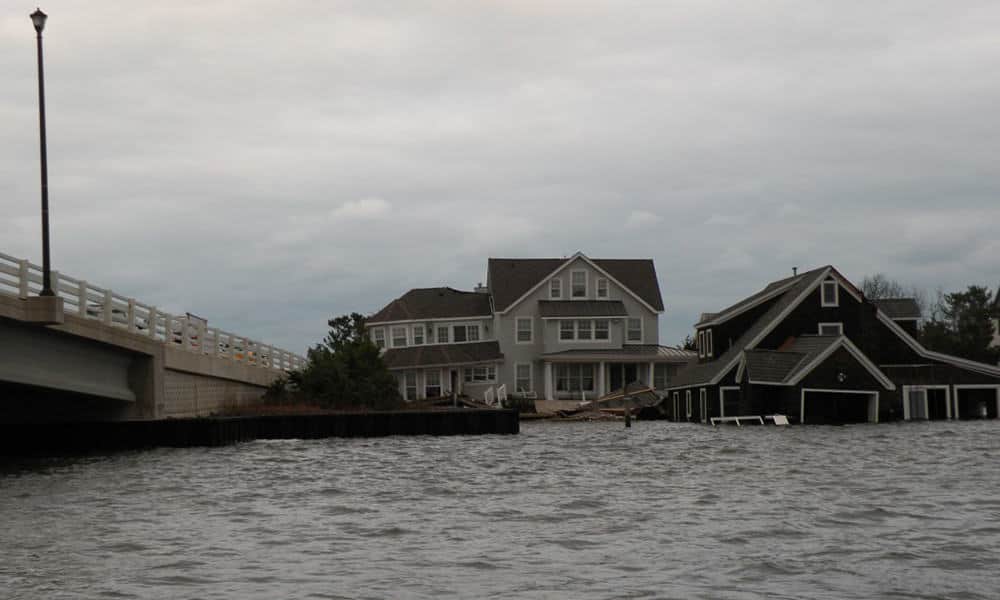
OCEAN COUNTY – The ominous weather reports before Hurricane Sandy hit just before Halloween in October 2012 were not anything you’d want to hear. Neither were the police officers driving down our street warning us to leave before noon the following Monday.
We had to sign paperwork that Friday night acknowledging that if we did not leave, the township was not responsible for anything that happened to us or to our home. We signed.
We had never been ordered to leave our Bayville neighborhood before. We left. In the end, we couldn’t return home for seven months, until the house was repaired.

Sandy was within 50 miles of the New Jersey coast before it hit in Brigantine as an extratropical cyclone. The storm peppered the Jersey Shore with hurricane-force winds, record low pressure, and a huge storm surge along the coast.
“The storm becomes the worst hurricane to affect the state on record, killing 37 and causing nearly $30 billion in damages,” according to the National Oceanic and Atmospheric Administration (NOAA). “Widespread devastation is noted, particularly on Long Beach Island and the Barnegat Peninsula, where the Seaside Heights boardwalk collapses into the ocean.”
Sandy took the most lives, compared to a storm in August 1806 storm, which killed 21 residents.
Governor Chris Christie said the losses caused by Sandy were “going to be almost incalculable…The devastation on the Jersey Shore is probably going to be the worst we’ve ever seen.” [3]
And unfortunately, it looks like 2020 will be also be an active hurricane season. This year, again there will not be an El Nino to suppress Atlantic hurricane activity either, says NOAA.

“NOAA’s analysis of current and seasonal atmospheric conditions reveals a recipe for an active Atlantic hurricane season this year,” said Neil Jacobs, acting NOAA administrator. “Our skilled forecasters, coupled with upgrades to our computer models and observing technologies, will provide accurate and timely forecasts to protect life and property.”
The Atlantic hurricane season lasts from June 1st to Nov. 30. New Jersey’s tropical storm activity occurs between August and late October. Sandy pummeled New Jersey on Oct. 30, 2012.
Warmer than usual sea surface temperatures in the tropical Atlantic Ocean and Caribbean Sea, reduced vertical wind shear, weaker tropical Atlantic trade winds and an enhanced west African monsoon season all increase the chances of an above-normal 2020 hurricane season.
A hurricane is a huge storm that can be up to 600 miles across and have strong winds spiraling inward and upward at speeds of 75 to 200 mph. They can be life-threatening as well as cause serious property-threatening hazards such as flooding, storm surge, high winds and tornadoes.
So what were some of the worst hurricanes and storms to batter the Jersey Shore?

The Perfect Storm – Oct. 31, 1991 – The 1991 Halloween Nor’easter brought massive waves of up to 30 feet. High tides along the Jersey Shore were only surpassed by those of the 1944 hurricane. Significant bay flooding occurred. Strong waves and intense winds caused extreme beach erosion. In all, damage amounted to $90 million (1991 USD), though no deaths occurred in the state.
The Great Atlantic Hurricane – September 1944 – Destroyed hundreds of homes, did major damage to Long Beach Island, Ocean City, Atlantic City and Cape May. Bridges in some towns were destroyed.
Hurricane Donna – September 1960 – The nor’easter brought 100 mph winds and 5 to 6 inches of rain in New Jersey. Nine people died in the state. The name “Donna” will never be used again for a hurricane because of the severity of the storm. The hurricane produced 105 mph (169 km/h) wind gusts and a storm surge of 6 feet (2 m) near Atlantic City, and 8.99 in (228 mm) of rainfall near Hammonton,.[26][37] One person died related to a heart attack during the storm.[1]
The Storm of March 1962 – Also known as the Great Storm of the Jersey Shore and the Ash Wednesday Storm. The late James J. Mancini – longtime mayor of Long Beach Township for decades and an Ocean County Freeholder – considered the March 1962 storm the worst on Long Beach Island. Six hundred homes on Long Beach Island were lost. Seven people died, including Long Beach Township Police Chief Angelo J. Leonetti, Township Police Commissioner Kenneth G. Chipman, First Aider Robert Osborn and two elderly couples.






